This is the second in our series of articles taking a deeper dive with the use of data and game film into the Giants' 2020 draft class. We already studied first round pick Andrew Thomas. Here is a look at multi-faceted safety Xavier McKinney.
Athletic Traits
I like to use two different metrics when evaluating a player's measureables. The first is RAS, which stands for Relative Athletic Score. It is a formula created by Kent Lee Platte and compares a player's measurements and testing during the pre-draft process to everyone else at the position that has been tested since 1987. A 10 is the highest score with 5 being a true average score. You can find all the class's RAS scores at relativeathleticscores.com.

The other useful illustration are the spider graphs posted at mockdraftable.com, which provides a nice visual of what a player's strengths are compared to others at the position. The numbers represent the percentile each player ranks in each category relative to the other players at his position.
McKinney's combine performance was incomplete. His 4.63 time in the 40 was slower than expected due to cramping. He did not run the three-cone drill or the 20-yard shuttle to measure his agility. His broad and vertical jumps were above average. Due to the COVID-19 pandemic, McKinney did not have a pro day to improve his numbers, which might have been one of the reasons he dropped to the Giants in the second round.
The intriguing part of his physical measurements was his weight. At just 201 pounds, it will be interesting to see the amount of physical pounding he can take near the line of scrimmage. In college, he never hesitated to play physical football in tight.
Dave Gettleman, after selecting McKinney, talked about his ability to play deep coverage. His size might be more suited to that role long term. With Jabrill Peppers able to play closer to the line of scrimmage, it could be a good fit for McKinney in the Giants scheme.
College History (Advanced Production Numbers Courtesy of Pro Football Focus)
2017: True Freshman Season – 13 games and no starts
PFF Numbers: 98 defensive snaps, one tackle for loss
2018: Sophomore Season – 15 starts at safety – Orange Bowl Defensive MVP
PFF Numbers: 73 tackles, 3 sacks, 1 forced fumble, 6 tackles for loss, 3 interceptions, 3 dropped interceptions, 8 forced incompletions
2019: Junior Season – 13 starts at safety, second team All-American, first team All-SEC
PFF Numbers: 95 tackles, 3 sacks, 4 forced fumbles, 8 passes defended, 3 interceptions, 3 dropped interceptions, 6 forced incompletions
Overall: 2nd ranked safety by PFF, 19th overall player on their PFF draft board
Injuries: Did not miss a game due to injury in his sophomore or junior seasons
Athletic Background: He played all over the secondary and some wide receiver in high school. He was a four-star recruit and was the 6th rated safety in the country in his recruiting class.
View photos of former Alabama S Xavier McKinney.
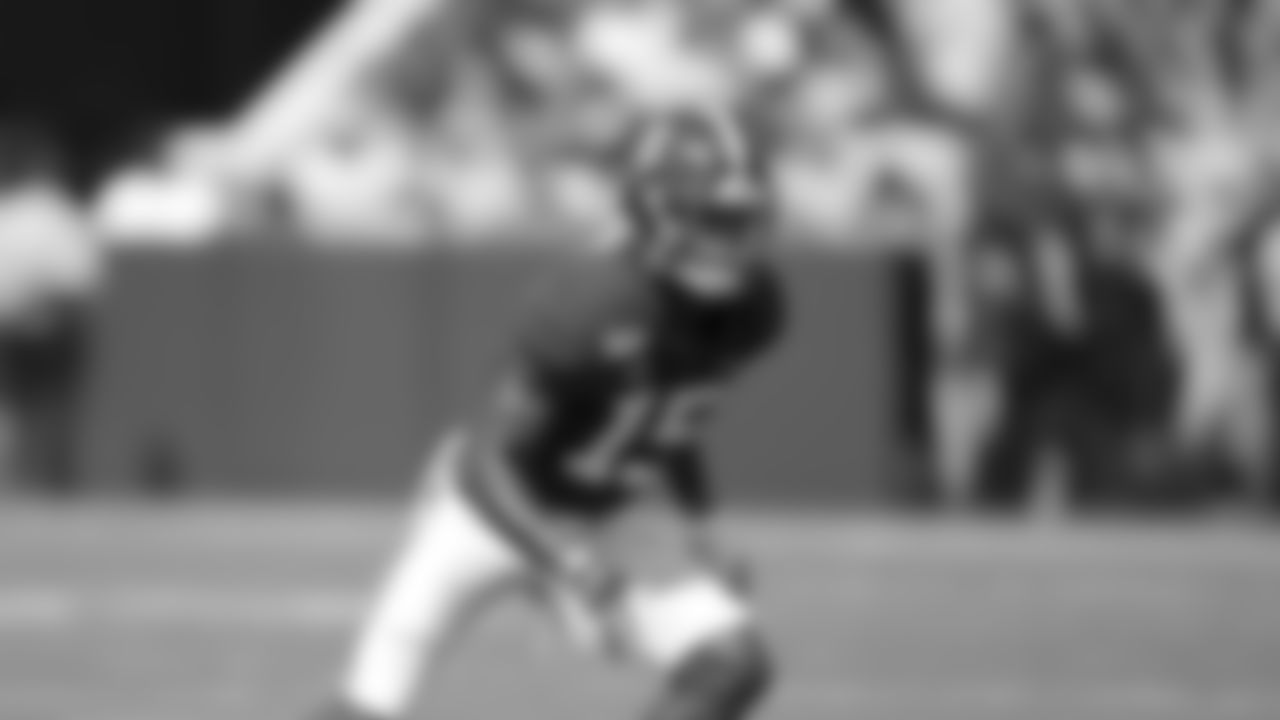
Alabama Crimson Tide defensive back Xavier McKinney (15) during an NCAA football game on Saturday, Sept. 7, 2019 in Tuscaloosa, Ala. (AP Photo/Marvin Gentry)

Alabama defensive back Xavier McKinney runs the 40-yard dash at the NFL football scouting combine in Indianapolis, Sunday, March 1, 2020. (AP Photo/Charlie Neibergall)

Louisiana-Lafayette quarterback Andre Nunez (7) is sacked by Alabama defensive back Xavier McKinney (15) and linebacker Dylan Moses (32) during the first half of an NCAA college football game, Saturday, Sept. 29, 2018, in Tuscaloosa, Ala. (AP Photo/Butch Dill)

Alabama defensive back Xavier McKinney (15) stands next to the MVP trophy for the defensive player of the game during the Orange Bowl NCAA college football game, Sunday, Dec. 30, 2018, in Miami Gardens, Fla. Alabama defeated Oklahoma 45-34. (AP Photo/Wilfredo Lee)
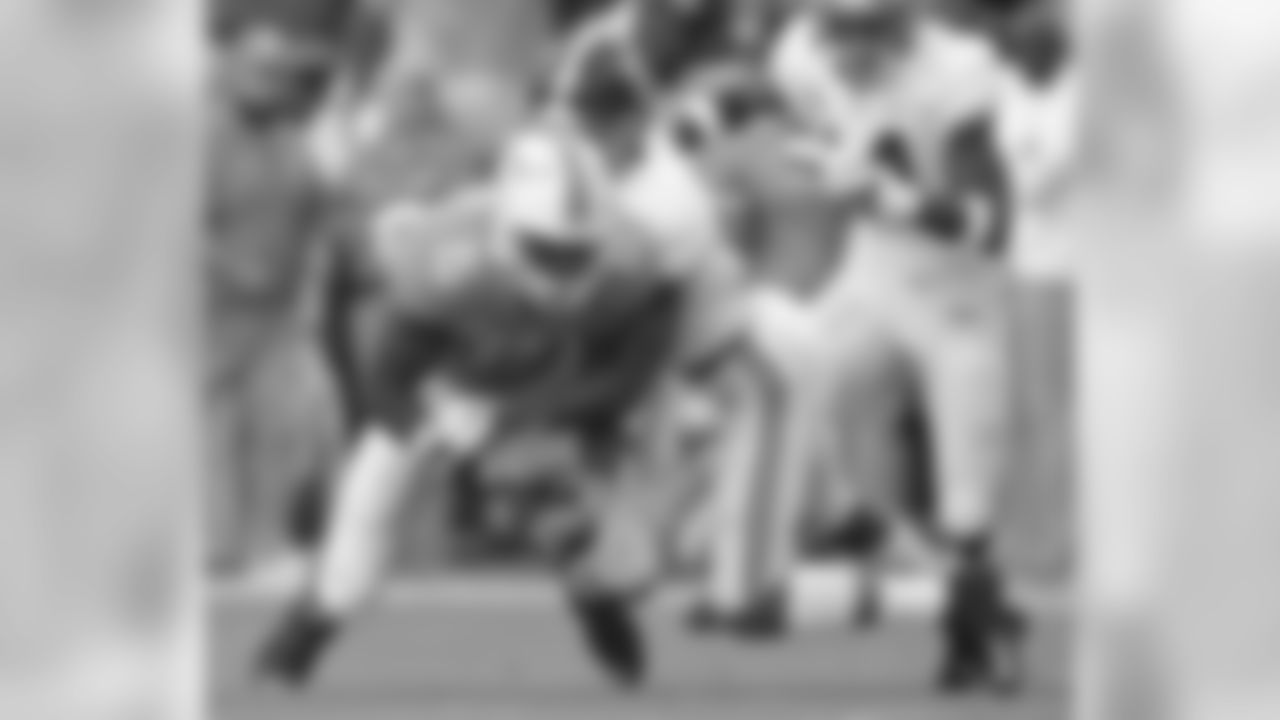
Tennessee wide receiver Jauan Jennings (15) fumbles the ball as he's hit by Alabama defensive back Xavier McKinney (15) in the first half of an NCAA college football game Saturday, Oct. 20, 2018, in Knoxville, Tenn. (AP Photo/Wade Payne)
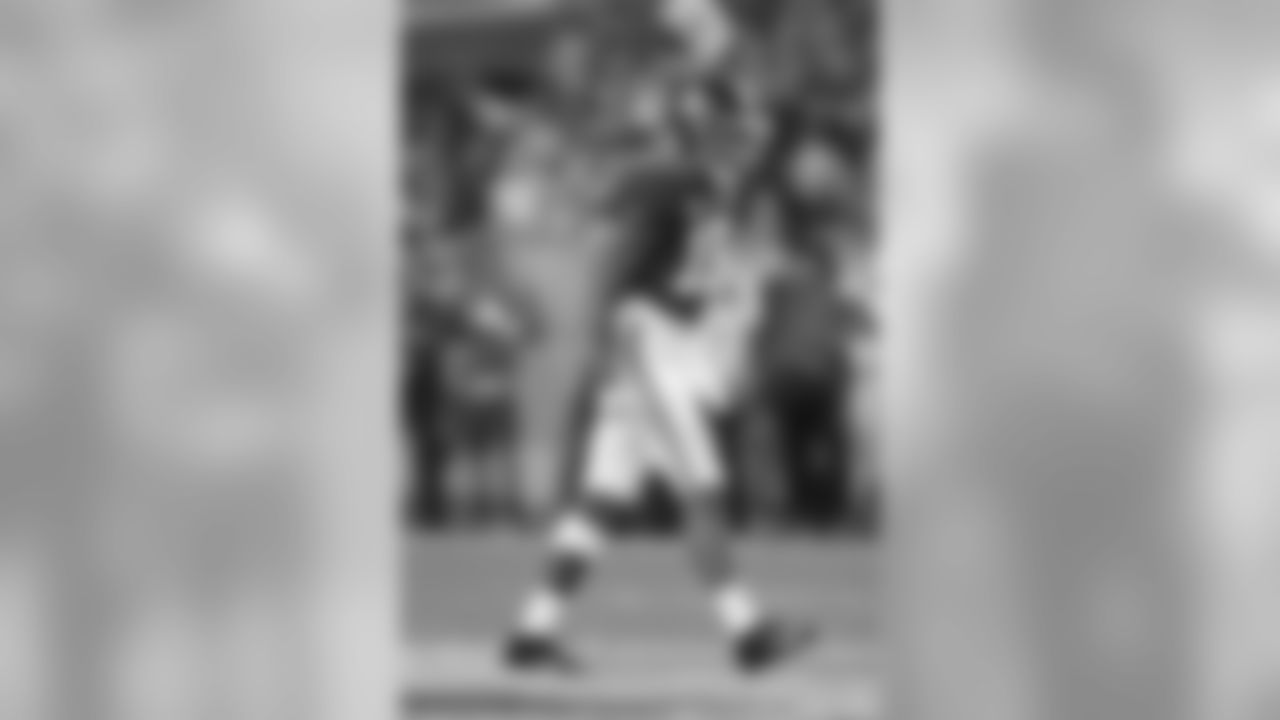
Xavier McKinney (15) of the Alabama Crimson Tide in action during the College Football Playoff Semifinal game at the Capital One Orange Bowl on December 29, 2018 at the Hard Rock Stadium in Miami Gardens, Florida (Tom DiPace via AP)
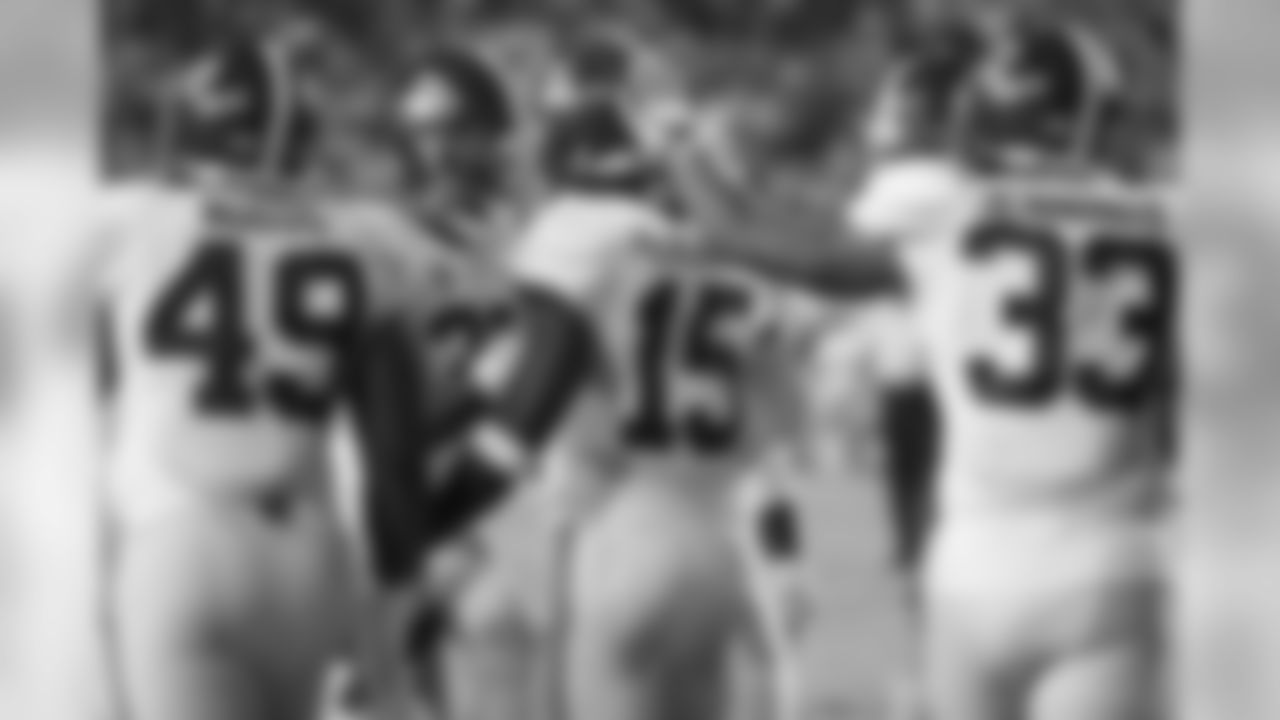
Alabama defensive back Xavier McKinney (15) is congratulated by teammates after returning an interception 30 yards for a touchdown during the second half of their NCAA college football game, Saturday, Sept. 15, 2018, in Oxford, Miss. Alabama won 62-7.(AP Photo/Rogelio V. Solis)

Alabama defensive back Xavier McKinney (15) struts into the end zone after returning an interception 30-yards for a touchdown during the second half of their NCAA college football game against Mississippi, on Saturday, Sept. 15, 2018, in Oxford, Miss. Alabama won 62-7.(AP Photo/Rogelio V. Solis)

Alabama defensive back Xavier McKinney (15) signals during the first half of an NCAA college football game against Southern Miss, Saturday, Sept. 21, 2019, in Tuscaloosa, Ala. (AP Photo/Vasha Hunt)
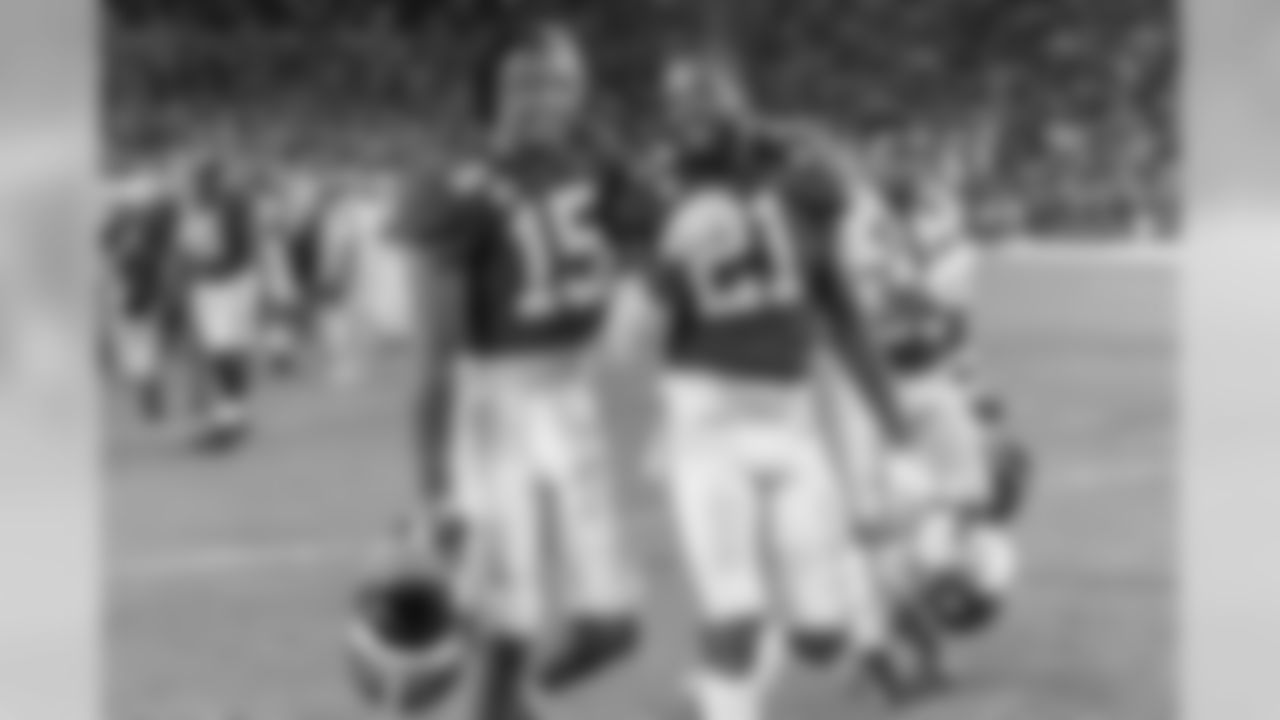
Alabama defensive backs Xavier McKinney (15) and Jared Mayden (21) hug after the team's 35-13 win over Tennessee in an NCAA college football game Saturday, Oct. 19, 2019, in Tuscaloosa, Ala. (AP Photo/Vasha Hunt)
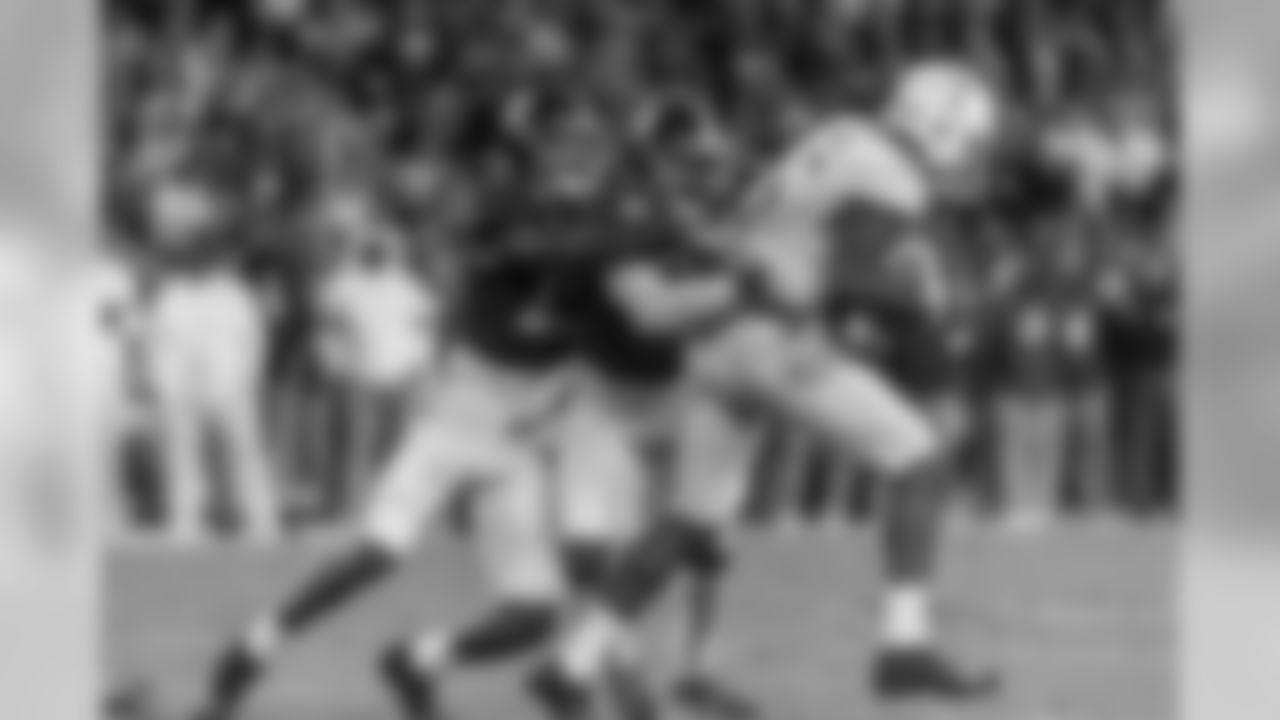
Alabama defensive backs Xavier McKinney (15) and Jared Mayden (21) drag down Tennessee wide receiver Jauan Jennings (15) during the first half of an NCAA college football game, Saturday, Oct. 19, 2019, in Tuscaloosa, Ala. (AP Photo/Vasha Hunt)

Tennessee quarterback Jarrett Guarantano (2) attempts to throw to a receiver as he is sacked by Alabama defensive back Xavier McKinney (15) in the first half of an NCAA college football game against Alabama Saturday, Oct. 20, 2018, in Knoxville, Tenn. (AP Photo/Wade Payne)

Alabama defensive back Xavier McKinney (15) waves off a coverage during the second half of an NCAA college football game against Texas A&M Saturday, Oct. 12, 2019, in College Station, Texas. (AP Photo/Sam Craft)

Tennessee quarterback Jarrett Guarantano (2) attempts to throw to a receiver as he is pressured by Alabama defensive back Xavier McKinney (15) in the first half of an NCAA college football game against Alabama Saturday, Oct. 20, 2018, in Knoxville, Tenn. (AP Photo/Wade Payne)
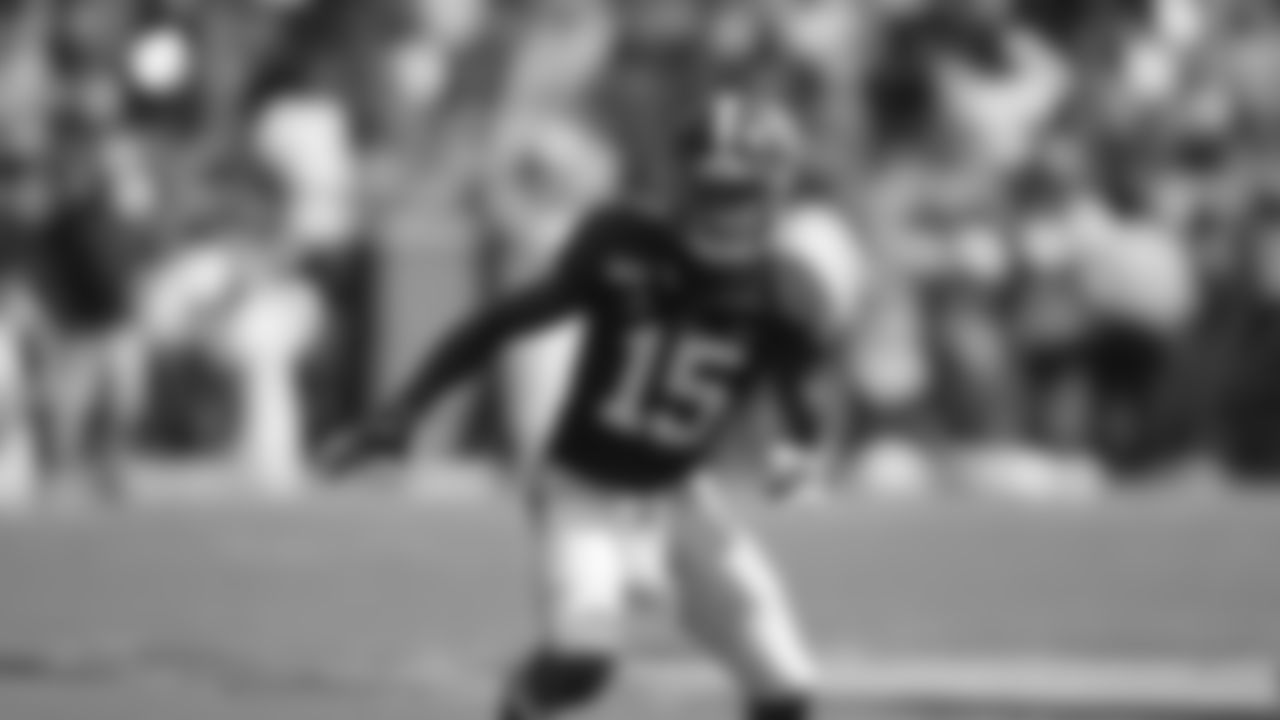
Alabama Crimson Tide defensive back Xavier McKinney (15) during an NCAA football game on Saturday, Sept. 7, 2019 in Tuscaloosa, Ala. (AP Photo/Marvin Gentry)
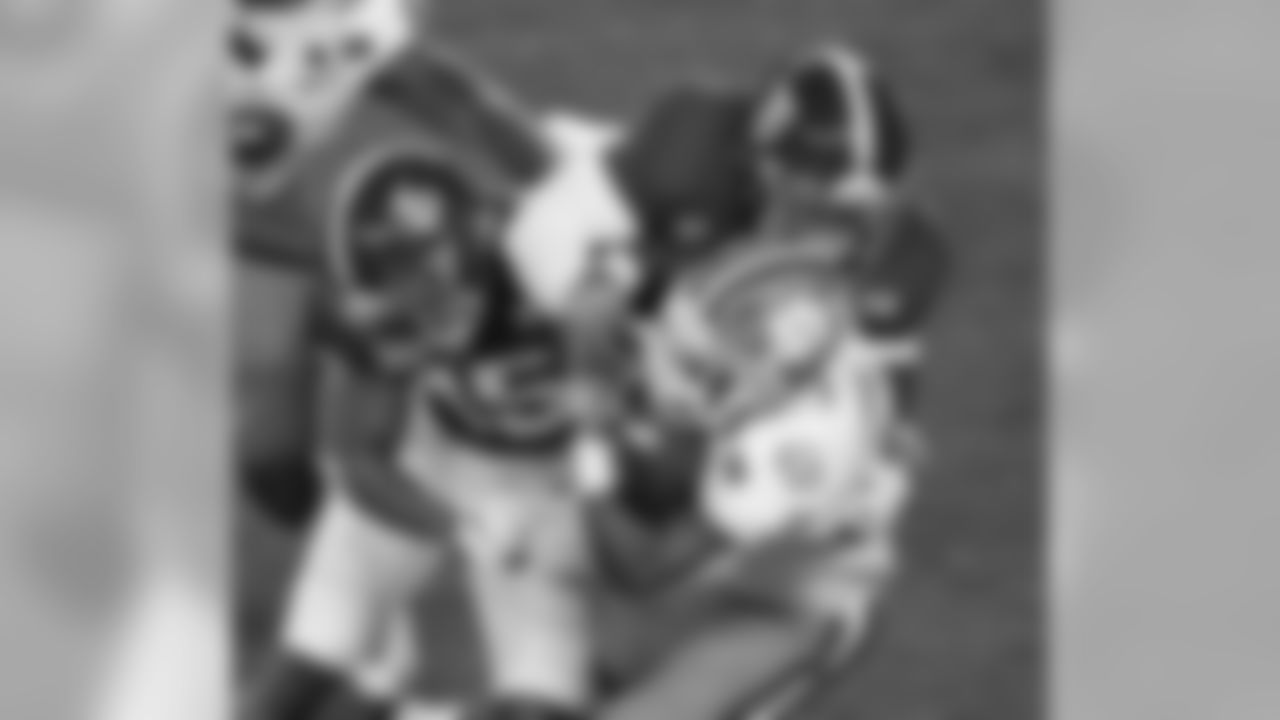
Clemson's Travis Etienne is stopped by Alabama's Xavier McKinney and Mack Wilson during the first half the NCAA college football playoff championship game, Monday, Jan. 7, 2019, in Santa Clara, Calif. (AP Photo/Jeff Chiu)

Alabama defensive back Xavier McKinney (15) during the second half of an NCAA college football game against Southern Miss, Saturday, Sept. 21, 2019, in Tuscaloosa, Ala. (AP Photo/Vasha Hunt)

Alabama's Xavier McKinney signals a paly during an NCAA football game on Saturday, Sept. 14, 2019 in Columbia, S.C. (AP Photo/Richard Shiro)

Alabama safety Xavier McKinney poses for a portrait during the 2020 NFL Scouting Combine, Wednesday, Feb. 29, 2020 in Indianapolis. (Todd Rosenberg via AP)

Alabama defensive back Xavier McKinney runs the 40-yard dash during the NFL football scouting combine, Sunday, March 1, 2020, in Indianapolis. (Aaron M. Sprecher via AP)
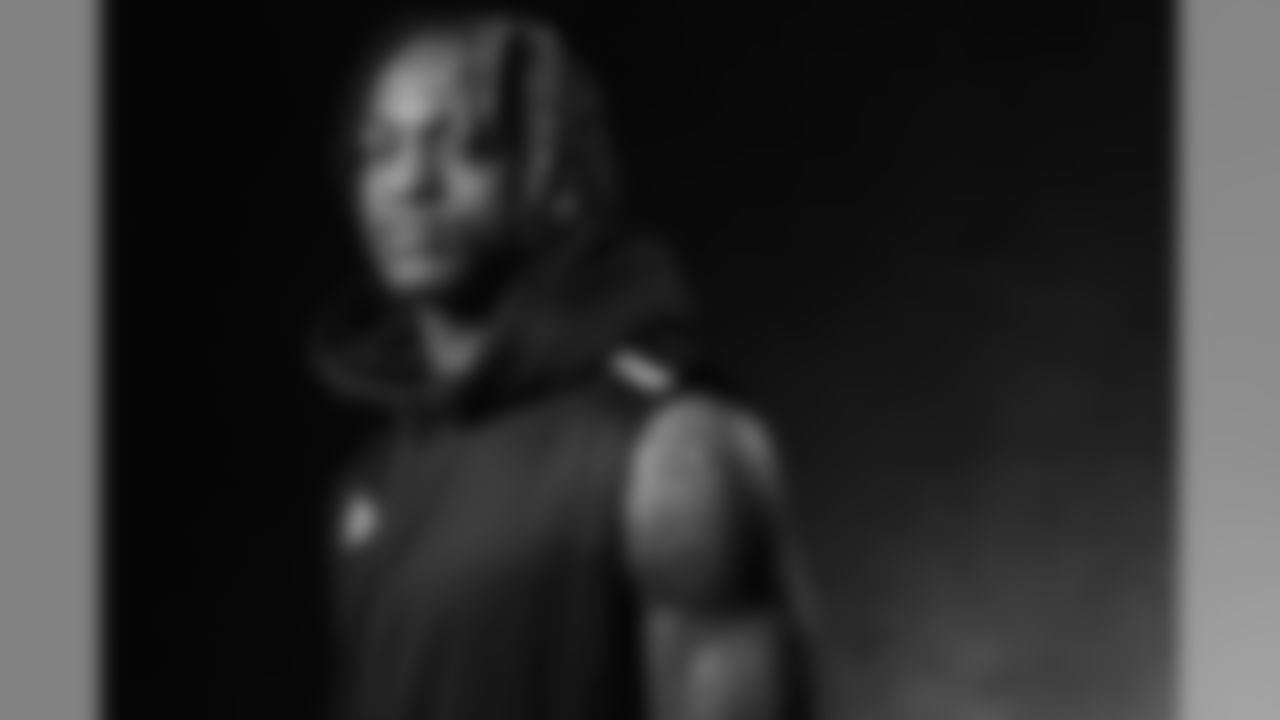
Alabama safety Xavier McKinney poses for a portrait during the 2020 NFL Scouting Combine, Saturday, Feb. 29, 2020 in Indianapolis. (Todd Rosenberg via AP)

Tennessee quarterback Jarrett Guarantano (2) fumbles the ball as he's hit by Alabama defensive back Xavier McKinney (15) in the first half of an NCAA college football game against Alabama Saturday, Oct. 20, 2018, in Knoxville, Tenn. (AP Photo/Wade Payne)

Alabama safety Xavier McKinney poses for a portrait during the 2020 NFL Scouting Combine, Saturday, Feb. 29, 2020 in Indianapolis. (Todd Rosenberg via AP)

Alabama safety Xavier McKinney poses for a portrait during the 2020 NFL Scouting Combine, Saturday, Feb. 29, 2020 in Indianapolis. (Todd Rosenberg via AP)

Alabama defensive back Xavier McKinney runs the 40-yard dash during the NFL football scouting combine, Sunday, March 1, 2020, in Indianapolis. (Aaron M. Sprecher via AP)

Alabama safety Xavier McKinney poses for a portrait during the 2020 NFL Scouting Combine, Saturday, Feb. 29, 2020 in Indianapolis. (Todd Rosenberg via AP)

Alabama safety Xavier McKinney poses for a portrait during the 2020 NFL Scouting Combine, Saturday, Feb. 29, 2020 in Indianapolis. (Todd Rosenberg via AP)

Alabama defensive back Xavier McKinney runs the 40-yard dash at the NFL football scouting combine in Indianapolis, Sunday, March 1, 2020. (AP Photo/Charlie Neibergall)

Alabama defensive back Xavier McKinney runs the 40-yard dash during the NFL football scouting combine, Sunday, March 1, 2020, in Indianapolis. (Aaron M. Sprecher via AP)

A detail view of Alabama defensive back Xavier McKinney's New Era jersey during the NFL football scouting combine, Sunday, March 1, 2020, in Indianapolis. (Aaron M. Sprecher via AP)

Alabama defensive back Xavier McKinney runs the 40-yard dash during the NFL football scouting combine, Sunday, March 1, 2020, in Indianapolis. (Aaron M. Sprecher via AP)

Alabama defensive back Xavier McKinney runs the 40-yard dash at the NFL football scouting combine in Indianapolis, Sunday, March 1, 2020. (AJ Mast via AP Images)

Alabama safety Xavier McKinney poses for a portrait during the 2020 NFL Scouting Combine, Wednesday, Feb. 29, 2020 in Indianapolis. (Todd Rosenberg via AP)

Alabama safety Xavier McKinney poses for a portrait during the 2020 NFL Scouting Combine, Wednesday, Feb. 29, 2020 in Indianapolis. (Todd Rosenberg via AP)

Alabama safety Xavier McKinney poses for a portrait during the 2020 NFL Scouting Combine, Wednesday, Feb. 29, 2020 in Indianapolis. (Todd Rosenberg via AP)

Alabama safety Xavier McKinney poses for a portrait during the 2020 NFL Scouting Combine, Wednesday, Feb. 29, 2020 in Indianapolis. (Todd Rosenberg via AP)

Alabama safety Xavier McKinney poses for a portrait during the 2020 NFL Scouting Combine, Wednesday, Feb. 29, 2020 in Indianapolis. (Todd Rosenberg via AP)

Alabama defensive back Xavier McKinney speaks during a press conference at the NFL football scouting combine in Indianapolis, Friday, Feb. 28, 2020. (AP Photo/AJ Mast)

Alabama safety Xavier McKinney poses for a portrait during the 2020 NFL Scouting Combine, Wednesday, Feb. 29, 2020 in Indianapolis. (Todd Rosenberg via AP)

Alabama safety Xavier McKinney poses for a portrait during the 2020 NFL Scouting Combine, Wednesday, Feb. 29, 2020 in Indianapolis. (Todd Rosenberg via AP)

Alabama safety Xavier McKinney poses for a portrait during the 2020 NFL Scouting Combine, Wednesday, Feb. 29, 2020 in Indianapolis. (Todd Rosenberg via AP)

Alabama safety Xavier McKinney poses for a portrait during the 2020 NFL Scouting Combine, Wednesday, Feb. 29, 2020 in Indianapolis. (Todd Rosenberg via AP)
Film Study
One of the biggest challenges watching McKinney on tape is finding him before the snap. He lined up all over the field for Alabama, often playing deep on earlier downs before moving closer to the line of scrimmage when the Tide went to sub-packages in passing situations. An easy way to find him is to let the play run and find the ball, which is where he ended up by the time the play was over.
He played single-high or two-high safety, short zone or man as a box safety, cover slot as a nickel cornerback, and covered tight ends and running backs. Here are a mix of some of his best plays on tape from 2018, plays that feature him in all of his different roles.
Let's start where Gettleman referenced: in deep coverage.
Alabama starts the first play in a two-high safety formation but quickly converts to a single-high look after the snap with McKinney playing high. It is a clever play design by Western Carolina. Off play-action, the Catamounts send both players lined up in the backfield on routes down the field. The up-back, number 86, crosses McKinney's face on a post. The halfback runs down the seam just outside the hash. The play is designed to make McKinney choose who to cover. The quarterback's intent is to throw to the player he doesn't.
McKinney moves inside to follow the tight end across the field but keeps his eye on the quarterback. When he sees the pass is going to the halfback instead of the tight end, McKinney manages to flip his hips, change direction and get his head around to intercept the pass after effectively covering two receivers on the same play.
McKinney is playing deep in what looks like a two-deep man-under scheme. South Carolina runs two receivers toward McKinney. The Gamecocks want him to step up and attack the crosser in the middle of the field, but McKinney plays his assignment, tracks the deep ball, and leaps to grab the interception.
In this two-high formation, McKinney has to pick up a receiver after the initial coverage is beaten. He stays with the receiver going toward the sideline and breaks up the pass.
McKinney showed the ability to cover receivers in the slot when lining up closer to the line of scrimmage, as we see on these two plays against Texas A&M. On both plays, one an inside route and the other going toward the sideline, McKinney plays the receiver but also keeps an eye on the football to make a play before it reaches its target.
McKinney can rush the passer. He shows good instincts on this play to find the correct rush lane in the B-gap (between the guard and tackle) to get the quarterback. He rushes at a good pace and is controlled enough at the end of the play to finish the sack despite Joe Burrow stepping up in the pocket.
He showed the ability to speed rush off the edge and bend enough after clearing the defensive lineman to get his hand on the quarterback to affect the pass and force an interception.
McKinney covered running backs out of the backfield. On this play, he times his break on the pass intended for the Arkansas back, who is running an angle route toward the middle of the field. McKinney knocks the ball in the air, which results in an interception.
Here is an excellent one on one tackle against Clyde Edwards-Helaire, one of the most elusive backs in college football, to hold him to a short gain after a pass to the flat.
Here are back-to-back plays against LSU that show his willingness to be physical in the run game. The first one is on a 2nd and 2 and the next one is 3rd and inches where McKinney meets the LSU back in the hole and prevents him from getting a first down. Despite the fact Tyrion David-Price outweighs McKinney by more than 20 pounds, he holds his ground.
On this play, McKinney prevents a cutback from first round running back Clyde Edwards-Helaire and tackles him behind the line of scrimmage. On the end zone video, it looks like McKinney is purposely lurking behind Terrell Lewis to lure the running back to the hole before attacking. It shows good discipline not to just shoot through the gap and potentially overrun the play before identifying where the back is going.
It's clear McKinney can do many things well. Now it's a matter of where Patrick Graham thinks his skillset fits best in the scheme.

Giants App
Download the Giants' official app for iPhone, iPad and Android devices






